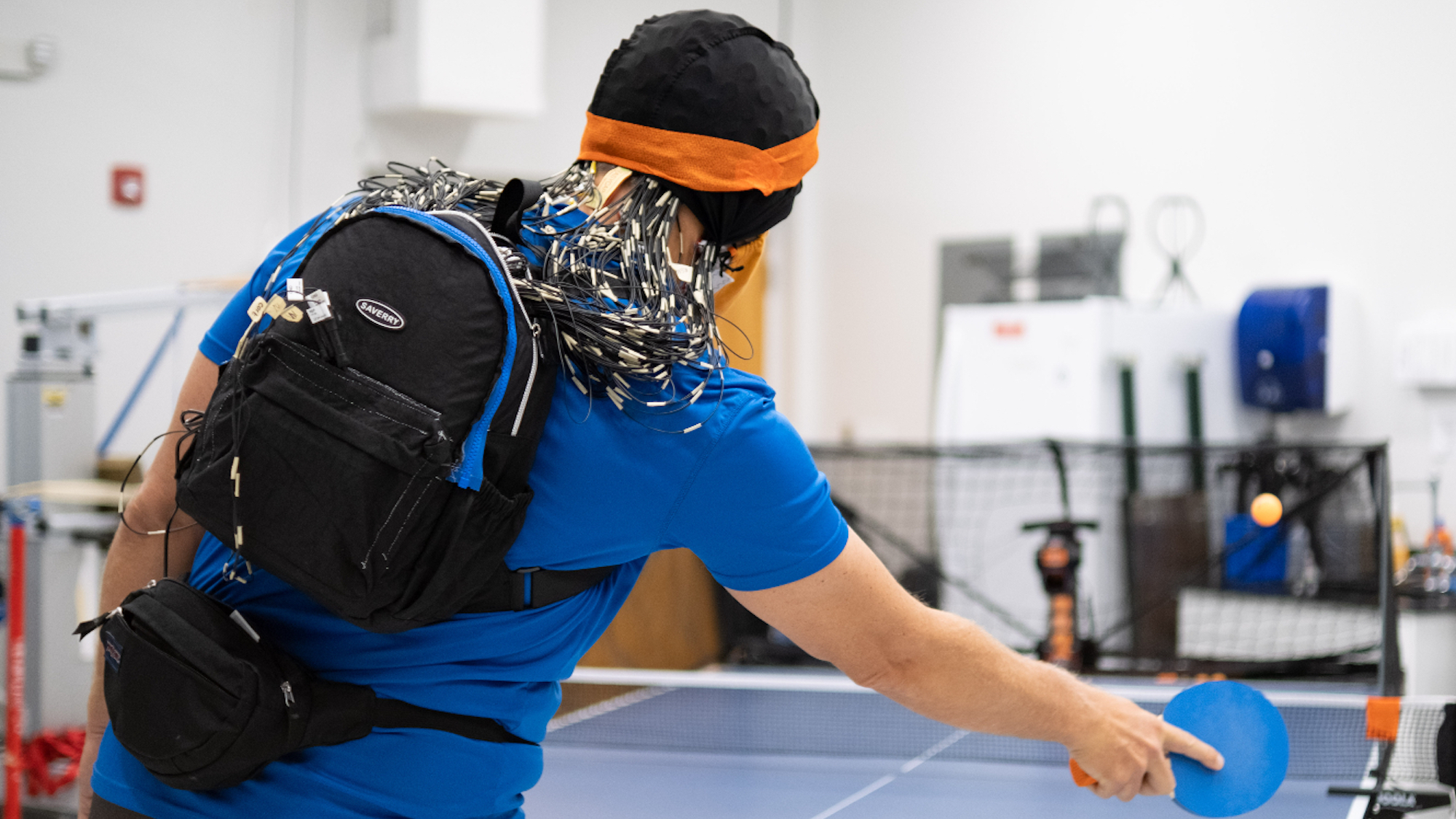

Dealing with humanoid robots in their current iterations often seems a bit uncanny—the technology feels vaguely like us, but comes up short in a way that boggles the mind. While this may not be as major a problem in manufacturing roles, in industries like elderly care, personality—even if robotic—could go a long way. But it’s more than just how they look—movement is key, too. As robots increasingly become integrated facets of everyday modern life, both their makers and outside researchers want to pinpoint why people respond to them the way they do, and how they can improve.
As researchers recently showed, one way to analyze these interactions is through a few rounds of table tennis. As detailed in a new paper published in the journal eNeuro a team at the University of Florida recorded human brain activity during dozens of hours of matches between both fellow human and robot opponents. They then compared the games to see if those rivals resulted in different neurological readings.
[Related: Meet Garmi, a robot nurse and companion for Germany’s elderly population.]
In a statement, Daniel Ferris, a professor of biomedical engineering at the University of Florida and advisor on the project run by Amanda Studnicki, a graduate student at UF, said, “Robots are getting more ubiquitous… Humans interacting with robots is going to be different than when they interact with other humans. Our long term goal is to try to understand how the brain reacts to these differences.”
To do this, Studnicki and Ferris assembled a cap lined with over 100 electrodes attached to a backpack-sized device, then asked human trial participants to don the futuristic hat while playing Ping-Pong. As it turns out, the human brain shows clear signs of working harder if paired against a robot opponent.
While serving against a fellow human, players’ neurons cooperated in unison to interpret subtle body cues, timing, and speed. When squared up against a ball-serving machine, however, the neurons weren’t as aligned, a situation known within neuroscience as “desynchronization.”
[Related: Do we trust robots enough to put them in charge?]
“In a lot of cases, that desynchronization is an indication that the brain is doing a lot of calculations as opposed to sitting and idling,” explained Ferris in a statement on Monday.
The team theorizes that because human brains work so much differently against a robotic opponent, when it comes to sports training nothing beats a fellow member of the species. That said, Studnicki isn’t so sure that will always be the case. “I still see a lot of value in practicing with a machine,” they said in Monday’s announcement. “But I think machines are going to evolve in the next 10 or 20 years, and we could see more naturalistic behaviors for players to practice against.”
Those naturalistic behaviors could come about through continued robotic improvements alongside similar brain activity monitoring. The closer to synchronization, the more seamless and less uncanny people’s experiences with robots could become. The ball, after all, is firmly in robot makers’ court.
